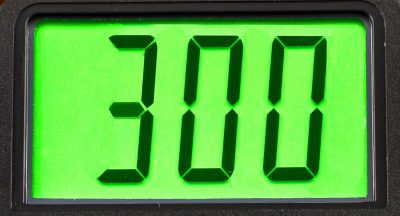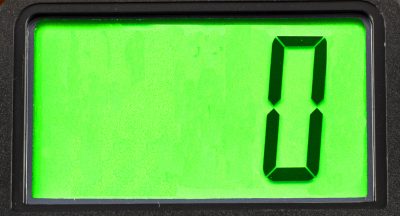Berkey Info, what a TDS counter can (and cannot) tell you
Share
TDS counters are generally easy to use, and although they may Inquire about your water, a TDS counter can't Tell you if your water is drinking based only on total dissolved material levels. Unlike certain advertisements used by the brands of reverse osmosis systems (RO) and water pitches that you may have seen or heard, a TDS counter tells only a small part of the story when it is to assess the aptitude of water to consumption.
What can you say a TDS counter? How does it work?
Solids dissolved in water, such as salts, minerals and heavy metals, contain loaded particles: negatively loaded (anions) and positively loaded (cations). Most TDS meters simply use electrodes to measure the resulting electrical conductivity of water, which the counter converts TDS value.
Water with higher levels of dissolved solids will have greater electrical conductivity (and therefore higher TDS meter readings), and water with lower levels of dissolved solids will have lower electrical conductivity (readings lower TDS meter). The readings of the TDS meters are generally expressed in parts per million (PPM), which is also equivalent to MG/L.
TDS counters can be useful to confirm the elimination of total dissolved solids if your home or business uses a reverse water or osmosis distillation system. TDS readings can also help you assess the hardness of your water and if a water softener system may be necessary, or if the accumulation/deposits of tartar in your pipes could be linked to an excess of minerals present in your water.

What are examples of dissolved total solids?
Dissolved solids include salts, minerals (many of which can be beneficial for your health) and heavy metals (which can be bad for you). Some of the most common dissolved solids include aluminum, calcium, magnesium, chloride, potassium, sulfate, nitrate, silica, iron, lead, potassium, sodium and zinc.
What are the sources of solid dissolved, good and bad?
- Urban and agricultural runoff
- Industrial wastewater
- Intrusion of salt water in freshwater sources used by municipal water supplies
- Wastewater
- Water pipes in your home
- Road deglassing salts
- Natural sources - aquifers, sources (often rich in beneficial minerals)
Are there acceptable levels of total dissolved materials in drinking water?
The dissolved total solids are considered by the Environmental Protection Agency (EPA) as a "harmful chemical" because they can affect the taste, color and smell of drinking water. Consequently, the EPA has set maximum levels of non -enforceable secondary contaminants (also known as SMCL) for total dissolved solids and other contaminants which are not Considered a risk to human health at SMCL.
The maximum level of secondary contaminants for total dissolved solids is 500 mg/l. Water containing the levels of dissolved solids total higher than the maximum secondary contaminant recommended by the EPA of 500 mg/L would probably not be very attractive to drink. It could have a salty taste or a less than clear color. Other effects of high levels of total dissolved materials in drinking water may include hardness of the water, tartar formation and stains.
Before you get into the media of the TDS allegations "0", consider the following points:
- While a "0" TDS reading would indeed indicate that no dissolved solid is present, a "0" TDS reading also indicates that none mineral beneficial (your body needs) does not stay in drinking water. Many consumers prefer filtration systems that allow water to retain beneficial minerals that can help support the body's ability to remain hydrated. In addition, the water "0" TDS - essentially the same as the distilled water that you would use in an iron, a CPAP machine or an aquarium - will have very little taste, or even none, or a "flat" flavor Due to the absence of minerals or impurities. On the other hand, some people are ready to pay the high price to buy mineral water, reputed to be healthier and more tasty. But due to the minerals present in the water which contribute to the taste, the TDS readings of the best -selling mineral water brands can often vary between 200 and 2,000+ (carry out a search on the web for "tds of tds of popular mineral water ”can be quite complicated). -opening). So this raises the question: "0" TDS (or low values) really the best way to determine the quality of the water?
- Depending on the source of drinking water (in particular well water or other questionable tap water sources as in a campsite or a national park), filter this water through certain systems (such as a Pichet with water filter) could always give you a TDS reading "0". , however, water can always be contaminated by typical contaminants such as Giardia, cryptosporidium, bacteria (E. coli, etc.), toxic chemicals or any other threat of water contaminating which are undetectable by TDS counters.
- In a more extreme scenario (just to assert a point), even if the juice of a raw chicken package remained on the counter for hours could hypothetically record "0" TDS, you would never drink it because of the presence likely. bacteria. The same reasoning applies to drinking water: unless it is tested to detect specific threats or filtered by a powerful and proven water filtration system, you really do not know what you drink.

What can a TDS counter cannot not measure?
TDS counters can only measure the levels of electrical conductivity Drinking water caused by dissolved solids. Some models can also measure water temperature, pH level and salinity. However, TDS counters cannot tell you what solids dissolved (good or bad) or which contaminants could be present. For a specific distribution of dissolved solids or other contaminants in your water, a more in -depth water test is necessary.
And as a TDS counter only detects ions loaded , a TDS counter cannot measure contaminants unwanted . Unwanted contaminants include a number of contaminants that affect the safety of drinking water.
Some of the contaminants unwanted the most concern that can be found in drinking water and born are not detected by a TDS counter include, without limiting themselves:
- "Eternal chemicals" treated such as PFAS
- Potentially deadly microorganisms/pathogens such as viruses, bacteria and parasites such as cryptosporidium and giardia, etc.
- Pesticides and other toxic chemicals
- Lead
- Hexavalent chrome
- Fluoride
- Drugs
- Petroleum products
- Arsenic
- Chlorine
- Other types of contaminants that could be present in your drinking water
Essential
Again, TDS counters can only measure "harmful chemicals" affecting taste, smell and appearance, but a TDS counter will not tell you if (or what) much more potentially harmful contaminants could be present In your drinking water and could have an immediate effect on health. (Biological contaminants or toxic chemicals) or long -term health risks (such as PFAS, lead, etc.). Based on a TDS counter to determine if the drinking water is really suitable for the consumption of your family is at best a risky and insane bet.
In addition, it should be noted that many companies of water filters-some perhaps dishonest-continue to broadcast advertisements showing a TDS counter displaying a low value such as "0" or "5" on the screen , and implying or even declaring directly that due to the low readings of TDS, the water filtered by their system is the best or the safest to drink.
Avoid the TDS counter: choose a proven and powerful water filtration system
Berkey systems ® Equipped with authentic Black Berkey elements ® have been tested by third -party accredited and independent laboratories to eliminate or reduce more than 250 typical contaminants in tap water sources, including the reduction of numerous harmful contaminants that are not detected by TDS meters.
Berkey systems ® were originally designed for extreme use for preparation for emergency situations, help in the event of a disaster and out -of -network activities. They are also used daily in millions of households around the world by demanding consumers who have declared their independence in terms of water and trust the quality of Berkey ® . systems to meet their drinking water needs. Berkey systems ® are available in eight sizes and offer economic and durable filtration for only a few cents the gallon. No electricity, tools or plumbing required.
